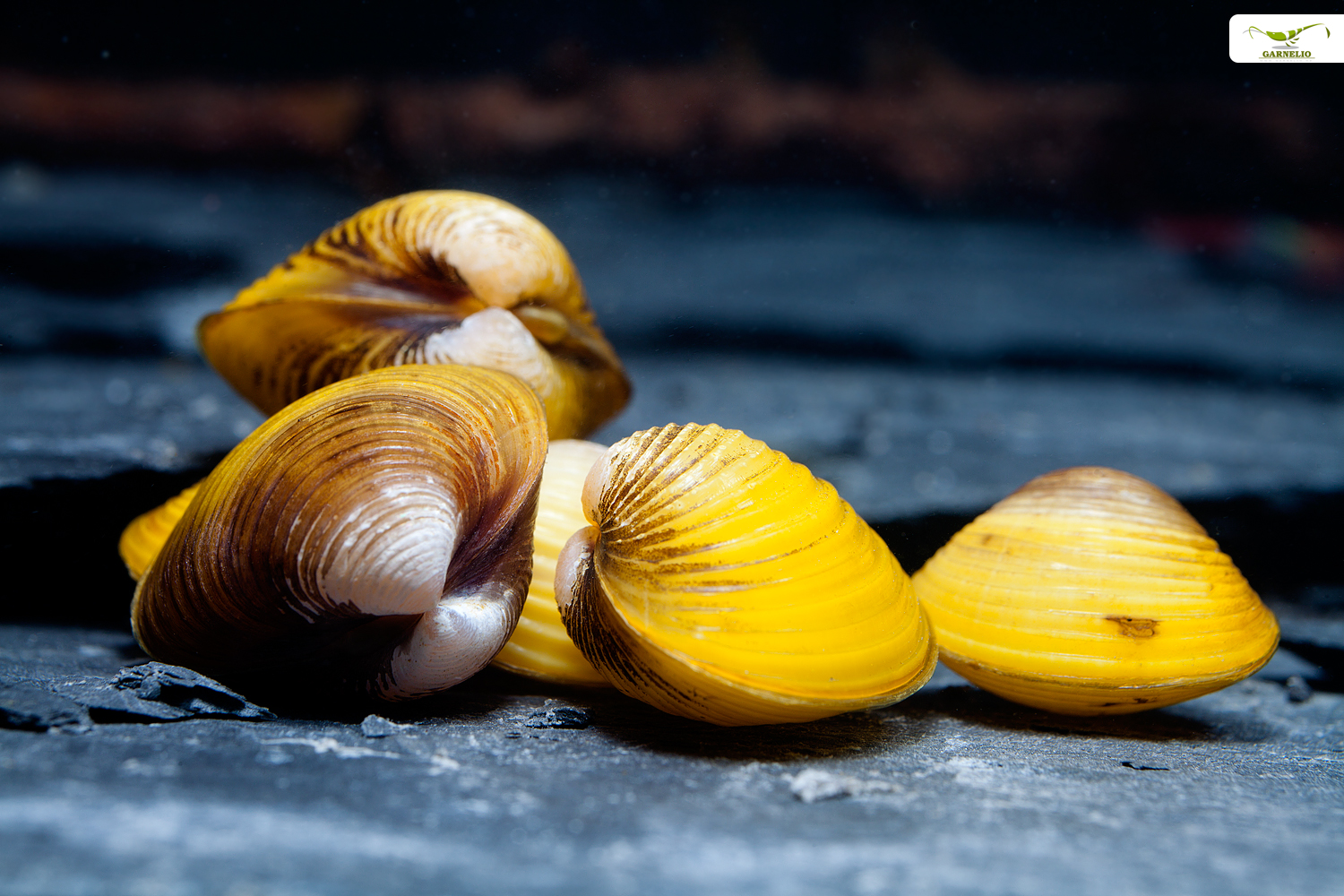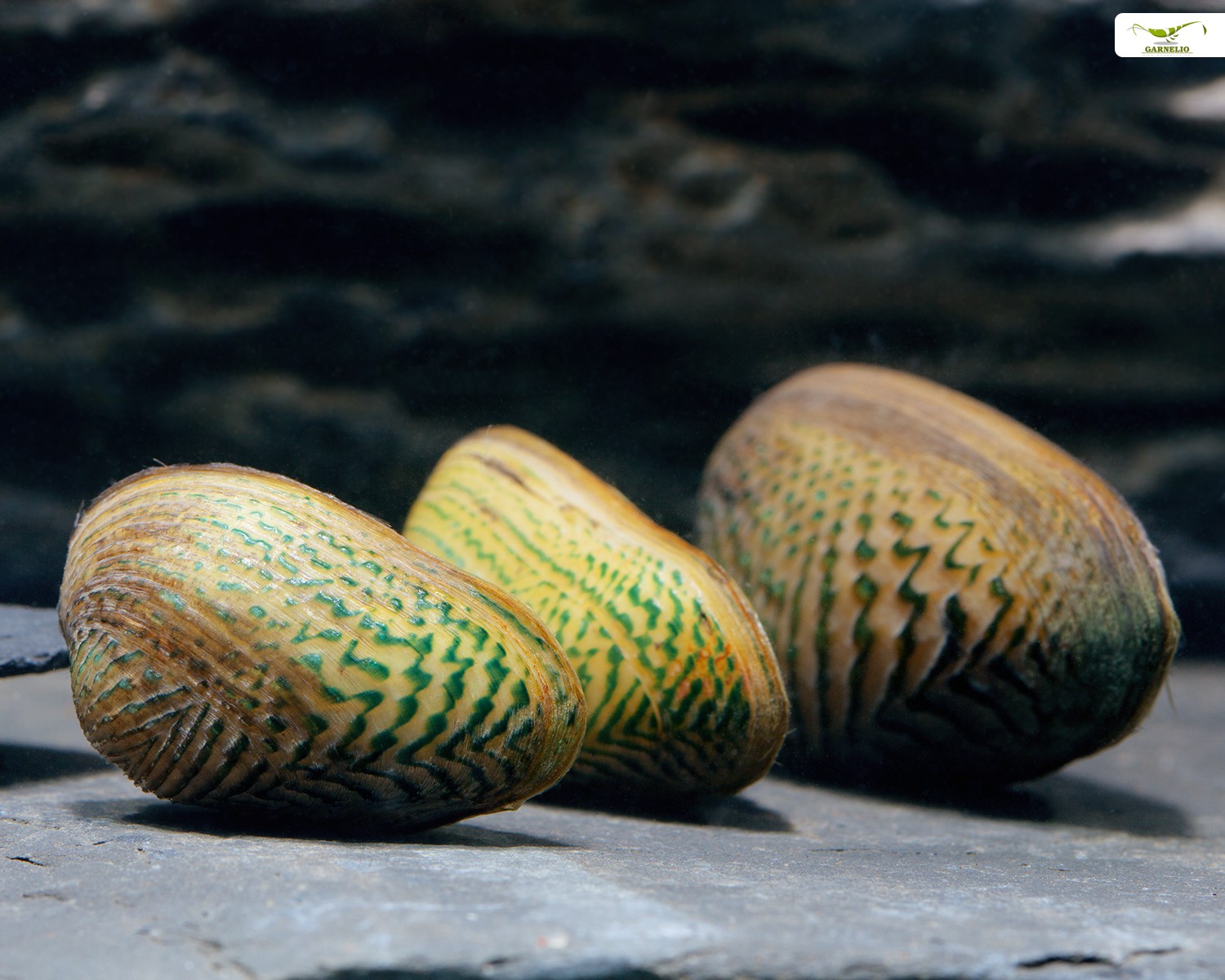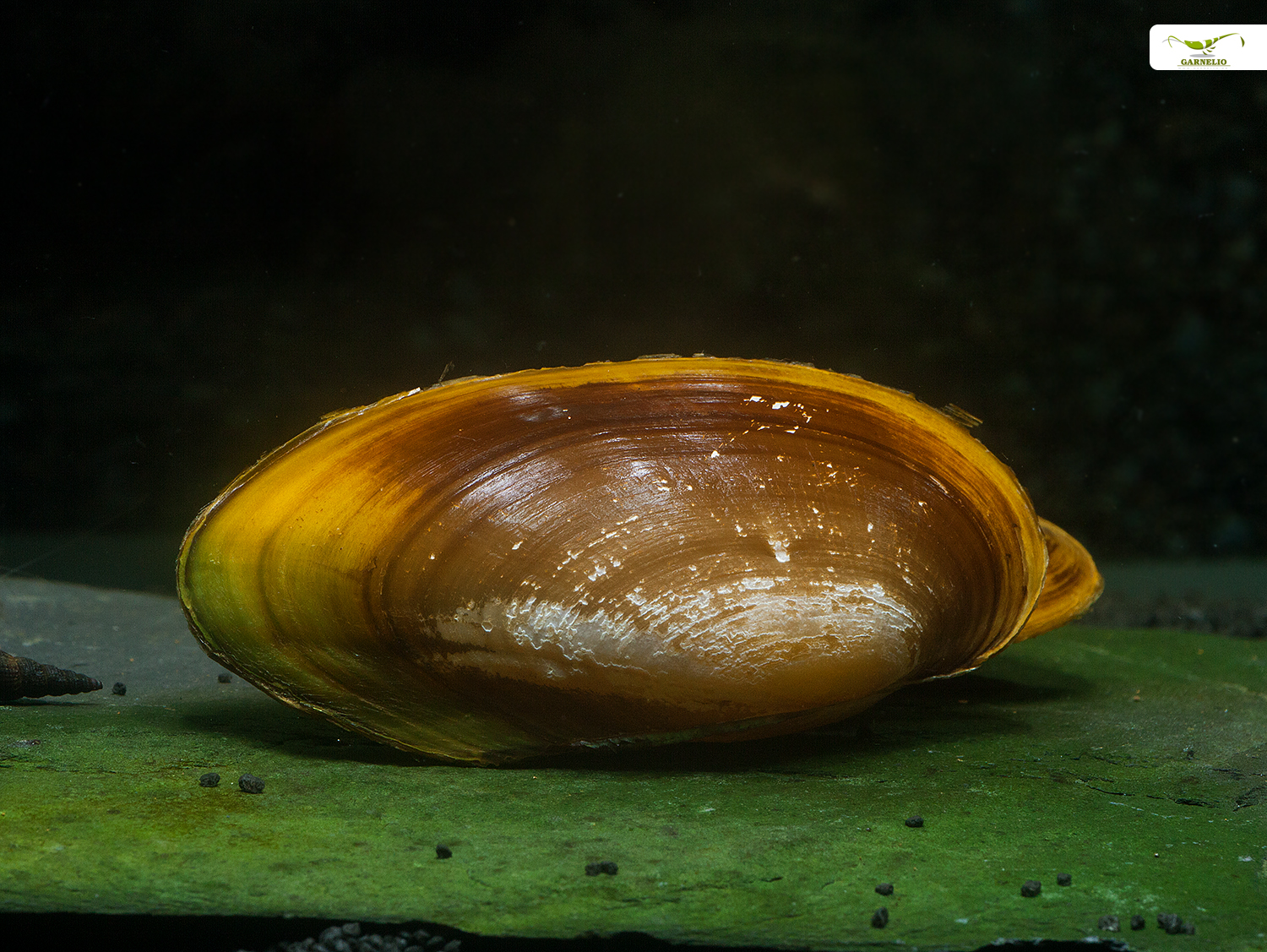Shells in the aquarium
Aquarium Mussels - Fascinating Aquarium Inhabitants
Mussels from the tropics, subtropics and also from temperate regions are fascinating inhabitants in freshwater aquariums. They are said to have legendary filtering properties. Most mussels have a funnel-shaped opening with which they suck in water. From this water they filter out particles, algae and microorganisms on which they feed. On the other side, they expel the clean, filtered water.

Natural biotopes
In nature, mussels are found preferentially in quiet stretches of flowing water or in stagnant waters, usually those with a rich microfauna. Mussels live there on and in soft substrates such as sand or sometimes in mud, in which they partially burrow. Other mussels attach themselves to hard substrates with putty threads. With their very muscular foot, mussels can move amazingly fast, so they are by no means tied to a single place and can change locations quite easily when needed.
Freshwater mussels are also important economically. They often serve as food, and some of them are even considered delicacies. Some species are used for pearl production. Pearls of freshwater mussels are irregular and often colored: pink, cream, gray or greenish. Mussels are problematic when they colonize ship hulls and are carried to other regions in the ships' ballast water. Introduced mussels are not unproblematic in bodies of water because their effective filtering ability takes food away from other small animals, fish larvae, and so on. For example, since the introduction of the zebra mussel, the water of Lake Erie has a much greater visual depth than before - particles that other organisms lack as food. Some mussel species are also frowned upon in fish farms because their larvae attach themselves to the gills of the fish and develop there. Aquarium mussels are mostly tropical species, which cannot survive in winter in our country, but they should never be taken outdoors!
Freshwater mussels are usually not very demanding on water hardness, as long as the water has a pH above 7.4 and provides them with enough calcium to build their shells. Many species are suitable inhabitants for unheated aquariums at room temperature.

In the aquarium, freshwater mussels must be fed once or twice a day with a food designed specifically for mussels(Natureholic mussel feed) to prevent starvation. The energy they need for their enormous filtering work comes solely from their food, which must therefore also be correspondingly energy-rich. The composition of the finely ground Natureholic Mussel Feed is based on the natural diet of the animals, and it provides the mussels with sufficient nutrients and also calcium to build up their shells. Without supplemental feeding, even a filterless aquarium is usually still too clean. In filtered aquariums, the animals have no chance at all. It takes a very long time until the actually frugal animals are really starved.
For targeted feeding of freshwater mussels we recommend the use of a pipette (supplied free of charge with the mussel feed). With this you can spray the dust food dissolved in a little water directly near the inlet of the mussel. During feeding, the filter should be turned off briefly so that the dust food lands in the mussel and not in the filter mat. The mussel must not be disturbed under any circumstances during feeding, otherwise it will collapse and the food will land uselessly in the substrate. Especially at the beginning you should take care to keep a sufficient distance and not let the water with the food flow too fast towards the mussel. With time, the animals get used to this kind of feeding and do not close up so quickly.
Mussels can be socialized with peaceful, not too curious fish. If they are disturbed too much, they fold their halves. In the worst case, they can starve to death if the fish show too much interest and do not leave them alone. Mussels can be socialized with crayfish of the genus Cambarellus Large crayfish and strong crabs should not be kept together with mussels to be on the safe side, because they can crack them and then eat them. Mussels can be kept together with shrimps without any problems, provided that they do not require soft water, such as the genus Caridina. With fan shrimp, which need a strong current, mussels can be kept, but they need a calm section with little current - this should be taken into account when setting up the aquarium. With filter-feeding snails such as piano sn ails or snails of the genus Brotia the socialization is ideal, provided that the amount of food is adapted to the stocking.

